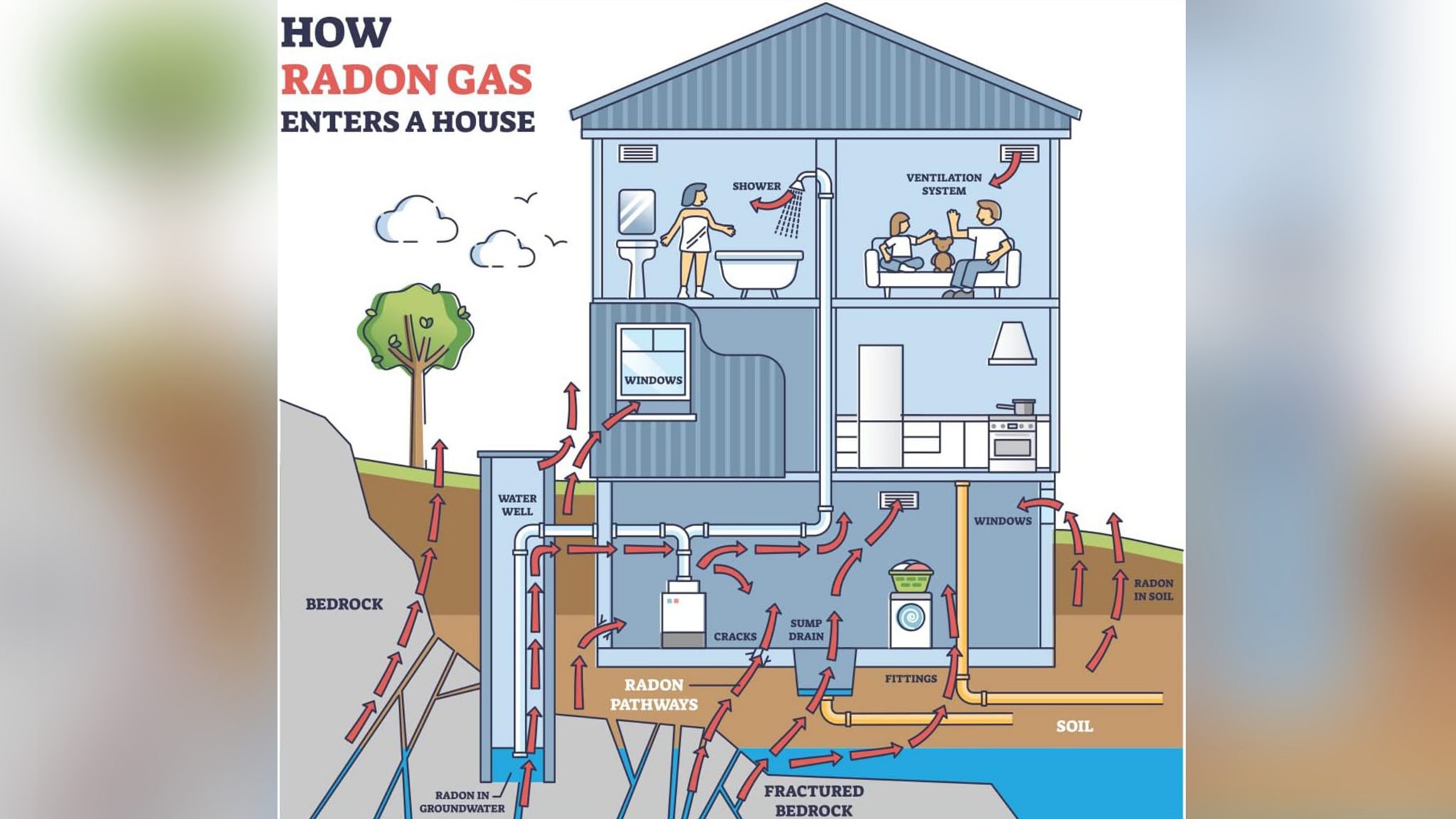Michigan radon specialist says more tests are needed in Detroit
Nargis Rahman January 16, 2024Individuals should test their homes every two years to look out for concerning levels of the naturally occurring radioactive gas.

Radon is the second leading cause of lung cancer overall and is the leading cause in non-smokers.
Click here to view the full audio transcript »
Michiganders are encouraged to test their homes for radon as part of National Radon Action Month in January.
Radon is a colorless, odorless, tasteless naturally occurring radioactive gas that can enter our homes due to changes in air pressure or weather.
Leslie Smith III, indoor radon specialist for the Michigan Department of Environment, Great Lakes and Energy (EGLE), says radon is the leading cause of lung cancer for nonsmokers.
“There are no outward symptoms that come with being exposed to radon. It does not cause rashes and doesn’t cause fevers or headaches or nausea or fatigue,” he said.
Radon is sourced from the radioactive decay of radium and uranium in the earth. It enters homes through openings in the foundation floor, crawlspaces, spaces around plumbing or wiring, or wherever the foundation is in contact with the soil.
The radiation from radon can scar lung tissue over several years of exposure to elevated levels. While there is no “safe” level of radon exposure, the higher the radon level and longer the exposure, the greater the health risk. The EPA estimates as many as 21,000 lung cancer deaths a year are caused by radon.
Smith says seven out of 1,000 people who are nonsmokers are expected to develop lung cancer at four picocuries per liter. For people who have smoked or have ever smoked, “that risk jumps up to 62 per 1,000 [people].”
He said there hasn’t been a lot of radon testing in Wayne County in the past 10 years, but many homes that have been tested have high radon levels.
“Seventeen percent of the tests that are done in Wayne County, according to that map, were at or above the actual level of four picocuries per liter,” he said.
Individuals should test their homes every two years to look out for concerning levels of radon and take appropriate steps to reduce it, he said. Testing is best done in the winter months, when windows and doors are kept closed.
Free radon test kits are available at local hardware stores or health departments across the state.
Listen: Leslie Smith III, indoor radon specialist for Michigan EGLE, speaks with WDET’s Nargis Rahman about the importance of radon testing in winter.
Trusted, accurate, up-to-date.
WDET strives to make our journalism accessible to everyone. As a public media institution, we maintain our journalistic integrity through independent support from readers like you. If you value WDET as your source of news, music and conversation, please make a gift today.
Author
-
 Nargis Hakim Rahman is the Civic Reporter at 101.9 WDET. Rahman graduated from Wayne State University, where she was a part of the Journalism Institute of Media Diversity.
Nargis Hakim Rahman is the Civic Reporter at 101.9 WDET. Rahman graduated from Wayne State University, where she was a part of the Journalism Institute of Media Diversity.

